Greenhouse farming is particularly efficient, as it allows for year-round production without the need for cold winters or hot summers. As a result, this farming method is becoming increasingly popular in the Philippines, providing farmers with an alternative to traditional agriculture. In addition to being humid, tropical climates are also ideal for greenhouses because they provide consistent temperatures year-round.
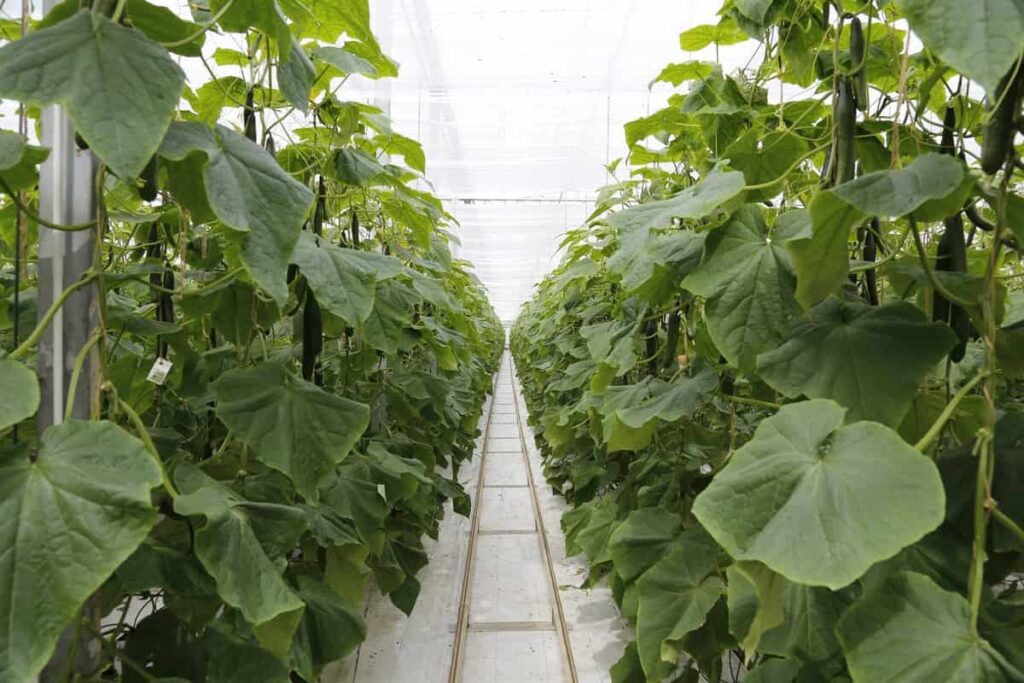
Greenhouse farming in the Philippines
What is greenhouse farming?
It is a type of agriculture that uses a controlled environment to cultivate plants. It is an environmentally friendly and cost-effective way to produce food. Greenhouse farming is a technique that can be used in both temperate and tropical climates.
Benefits of greenhouse farming in the Philippines
- Reduced energy requirements: Compared to traditional farming methods, greenhouse farming requires less energy for heating, lighting, and ventilation; this reduces greenhouse gas emissions.
- Reduced CO2 emissions: Greenhouse gases are emitted when crops are grown outdoors in the open air, but greenhouse gases are not released when crops are grown in controlled environments like greenhouses. Thus, greenhouse farming has the potential to reduce CO2 emissions by reducing reliance on conventional agriculture.
- Increased crop yields: Increased yields from greenhouse farms can be attributed to several factors, including improved air circulation, pest control, and optimized nutrient use.
- Enhanced flavor and aroma: Greenhouses allow for the cultivation of plants with enhanced flavor and aroma due to better light exposure and humidity levels. This will enable farmers to produce more delicate fruits and vegetables that may not otherwise be possible.
Tips for building Greenhouse farming in the Philippines
- Choose the right location – Greenhouses need good sunlight and ventilation, so choose a sunny site but not too hot or cold.
- Location is key – You must find an area with good sunlight and consistent temperatures. Clear skies are also necessary, as you must rely on natural light for photosynthesis.
- Get permits and licenses – Your municipality may require permits for greenhouse construction, and you may also need licenses from the Department of Agriculture (DA).
- Build the frame yourself or hire an engineer – Building your greenhouse can be fun, but hiring an engineer to help with the design and construction process is possible.
- Install windows and doors – You’ll need openings for air circulation and light exposure. Windows can be installed using traditional windows or sliding glass panels; doors can be either windowed or solid-wall types.
- Consider climate change – As the world warms up, the Philippines will experience more frequent typhoons and droughts. This means that your greenhouse needs to withstand weather changes and high winds.
- Get planning – Before you start building your greenhouse, it’s important to plan where it will go and how much space you need. Once you have this information, start gathering materials (such as soil, bricks, and glass) and hiring contractors or builders.
- Choose the suitable crops – The first step in cultivating crops is choosing the right one for your location and climate. For greenhouse farming, look for varieties that do well in hot weather (such as chilies) or cold weather (like tomatoes). You can also grow tropical fruits such as Avocados or Mangoes indoors during colder months in the Philippines.
In case you missed it: Greenhouse Farming in New Zealand: How to Start, Crops, and Benefits
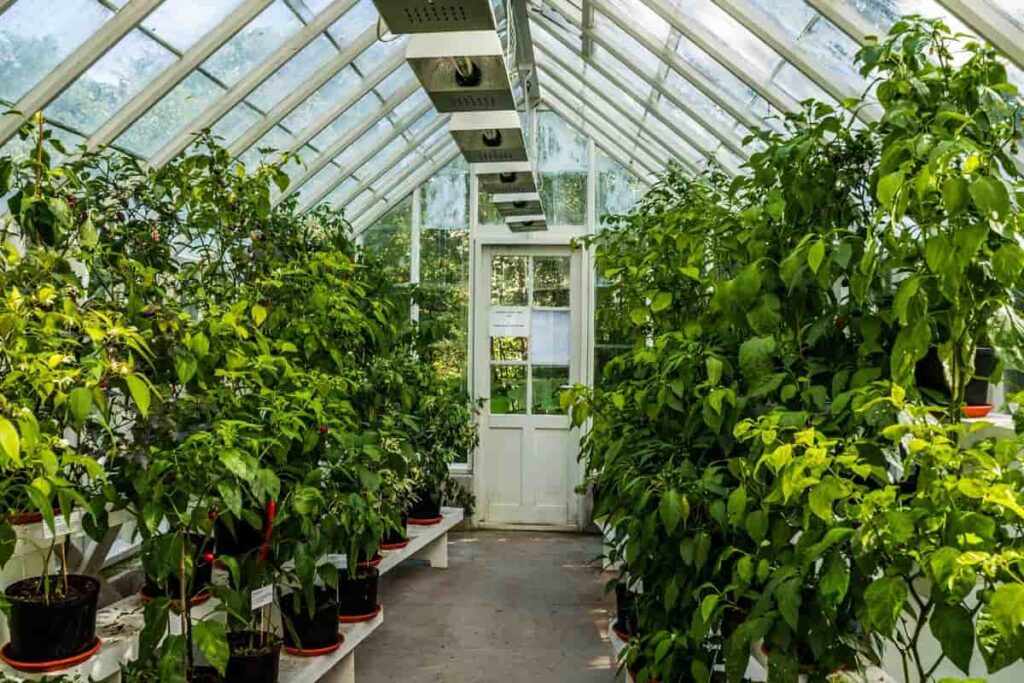
What are the different types of greenhouse farms in the Philippines?
Several types of greenhouses can be used in the Philippines. The best option for a new greenhouse farmer is to build an open-air structure made from plastic or metal panels. This type of greenhouse needs little care and can produce high yields of vegetables, fruits, and flowers. If space is not a concern, then a glass greenhouse is another good option.
These structures are heavier but provide better insulation, making them ideal for winter production. Farmers should also consider purchasing quality seeds, fertilizers, and other supplies before starting their businesses. Getting started on the right foot is essential to setting up a strong marketing strategy and developing long-term plans for success. The different types of greenhouses are;
- The hoop house is the most common type of greenhouse, which is easy to build and can be modified to fit any size garden. Hoop houses are also very affordable, making them a good option for small farmers.
- Another type of greenhouse popular in the Philippines is the tunnel greenhouse. This type of greenhouse has tunnels underneath it, allowing it to maintain a warm temperature even during cold weather. Tunnel greenhouses are expensive but can accommodate larger gardens than hoop houses.
- A tube-frame greenhouse is a good option for growing vegetables or flowers indoors. Tube frames are made of PVC pipes and are easy to assemble and operate. They also have adjustable ventilation systems, so you can control how much air CO2 levels inside the greenhouse. Tube frame greenhouses cost more than hoop houses and tunnel greenhouses, but they are durable and last longer than these other greenhouses.
Greenhouse farming states in the Philippines
There are nine greenhouse farming states in the Philippines: Albay, Bulacan, Cavite, Laguna, Leyte, Negros Occidental, Nueva Ecija, and Pangasinan. The five major greenhouses in the country are located in Albay (1,000 hectares), Cavite (500 hectares), Laguna (1,000 hectares), Leyte (2,000 hectares), and Negros Occidental (1,000 hectares). The Philippines is rich in tropical rainforests and has a long coastline.
With ample sunlight and fertile soil, the Philippines is perfect for greenhouse farming. The top three states for greenhouse farming are Pangasinan, Cebu, and Leyte. Pangasinan is home to the biggest greenhouse complex in the Philippines, with an annual production capacity of 2 million plants. Cebu also has a large greenhouse complex with a production capacity of 1 million plants. In addition, Leyte is home to the Green Planet Technology Corporation, which has a capacity of 500 thousand plants.
There are other smaller greenhouse operations scattered throughout the Philippines as well. The Philippines is estimated to have a production capacity of 6-7 million plants per year. The main challenge facing the Philippine greenhouse industry is logistics; it’s difficult to get produce from rural areas into urban centers where it can be sold and distributed to customers.
In case you missed it: Greenhouse Farming in Australia: How to Start, Cost, Crops, and Subsidy
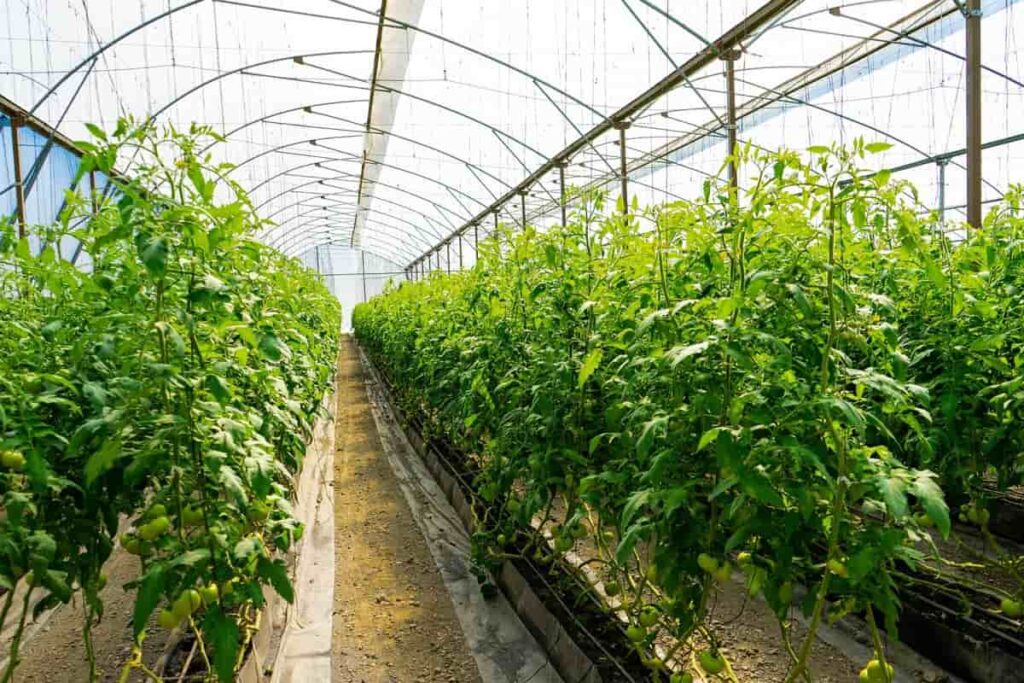
What to grow in a greenhouse in the Philippines?
If you consider starting a greenhouse operation in the Philippines, many different plants can be grown. A wide variety of fruit and vegetables can be produced using greenhouses in the Philippines as long as the right climate conditions are met. Below is a list of plants that can be grown in greenhouses in the Philippines:
| Tomatoes | Beans |
| Grapes | Cucumbers |
| Apples | Lettuce |
| Pears | Spinach |
| Citrus fruits | Potatoes |
| Peppers | Zucchini |
| Eggplant |
Starting a greenhouse business in the Philippines
There is a growing trend of greenhouse farming in the Philippines. This farming uses greenhouses to grow to produce indoors, using natural sunlight and ventilation. The advantage of greenhouse farming is that it’s efficient and allows for year-round production. The main obstacle to starting a greenhouse business in the Philippines is a lack of resources and expertise.
Few experienced growers are available, and most greenhouses are still in the testing phase. However, starting a greenhouse business in the Philippines can be very successful with the right investment and planning. One key factor when starting a greenhouse business in the Philippines is location. Generally speaking, greenhouses perform best in warm climates with plenty of sunshine. Additionally, greenhouses should be situated near major transportation hubs so that customers can easily access them
Another important consideration when starting a greenhouse business in the Philippines is a marketing strategy. It’s important to create a strong brand identity and develop targeted marketing campaigns that appeal to potential consumers. In addition, it’s necessary to establish relationships with local suppliers who can provide customized products and services specific to your greenhouse business.
Greenhouse subsidy and design permits in the Philippines
In the Philippines, greenhouses are a popular type of farming due to their high yields and resistance to weather conditions. In addition, greenhouses allow farmers to produce crops year-round, which is especially beneficial in areas with a long rainy season. The greenhouse subsidy in the Philippines provides financial assistance to farmers who install or upgrade greenhouses.
This subsidy has helped increase the number of greenhouse farms in the Philippines from around 1,000 in 2000 to over 10,000 today. The subsidy is granted through the Department of Agriculture (DA) and helps offset greenhouses’ installation, operation, and maintenance costs. The subsidy also provides income support for farmers who generate surplus crops that can be sold outside the market.
In case you missed it: 16 Key Rules for Effective Greenhouse Farm Management: From Planning to Reducing Production Cost
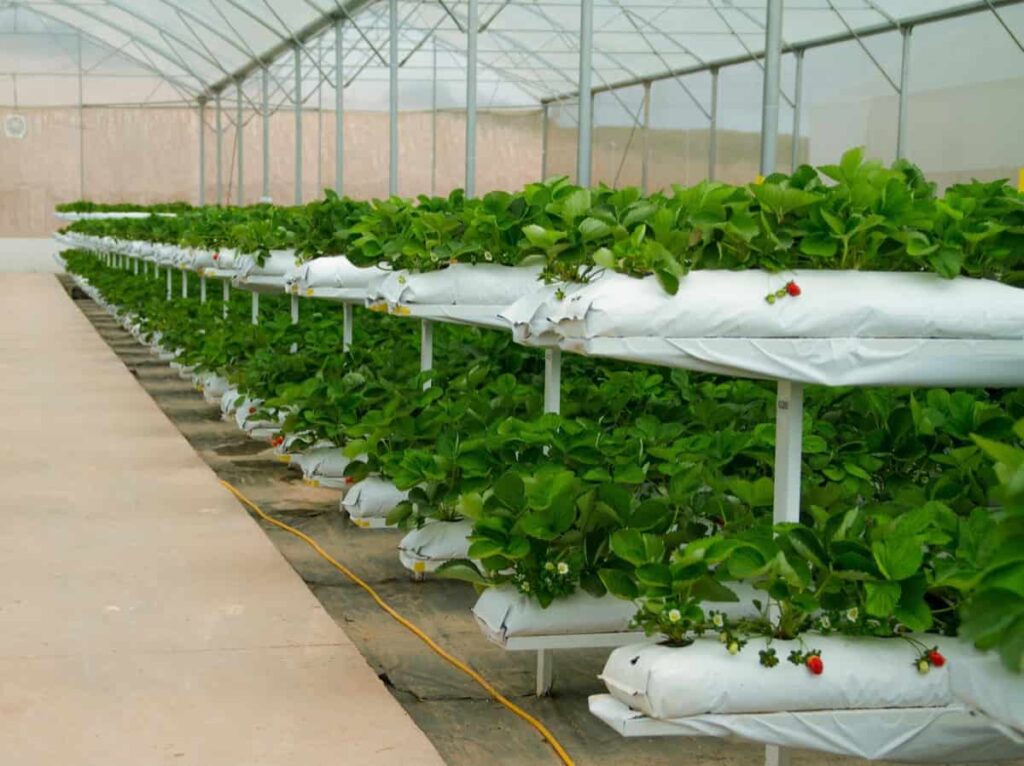
This income support allows greenhouse farmers to diversify their incomes and reduces their reliance on market prices, which can be volatile and unpredictable. The subsidy is currently being evaluated for possible renewal or expansion. If renewed or expanded, it would help increase food production in the Philippines while supporting sustainable development goals. It is a growing trend in the Philippines, and many benefits can be gained.
Firstly, greenhouse farming is environmentally friendly because it uses less land than traditional farming methods. Secondly, greenhouse farming is highly efficient because it allows farmers to produce various crops using minimal inputs. Finally, greenhouse farming is economically viable because it can be done on a small scale and still generate a high yield.
Get a permit from your local government. In the Philippines, permits are required from the Department of Agriculture (DA) and the DENR (Department of Environment and Natural Resources). In addition, you will need to submit an application form and supporting documents, such as a site assessment report and proof of land ownership. You may also need to obtain a building permit.
Choose plants wisely. Select plants that are tolerant of low light and temperature indoors, as well as those that produce high yields in these conditions. Consider choosing fruits and vegetables that can be harvested early in their growth cycle, so they do not suffer frost damage during the Philippines’ winter months. Install heating and cooling systems. Greenhouse farming requires colder temperatures at night than during the day, so ensure you install a heating system that maintains these cool temperatures throughout the year.
Crop production under greenhouse in the Philippines
The Philippines is blessed with lush green forests, ample coastline, and sunshine. This combination has led to the development of greenhouse farming in the Philippines. Greenhouse farming in the Philippines has taken off in recent years due to the country’s favorable climate and large population.
The Philippines has a tropical climate that allows for year-round greenhouse farming. Unlike traditional agriculture, greenhouse farming eliminates the need for land, soil, and water resources. Greenhouses use artificial light to generate crops indoors at a much lower cost than traditional agriculture.
Challenges of greenhouse farming in the Philippines
Despite these benefits, greenhouse farming in the Philippines faces some challenges. One problem is that many Filipinos are not familiar with this type of agriculture, so they may be hesitant to adopt it. Another challenge is that weather conditions can be unpredictable, so crops may not grow well in a greenhouse.
Nevertheless, overall, greenhouse farming in the Philippines appears to be growing increasingly popular, and there are indications that it will continue to be adopted by farmers as an affordable and sustainable form of agriculture. The main challenges facing greenhouse farmers in the Philippines include high electricity prices and a lack of land suitable for greenhouse cultivation. However, these challenges can be overcome by using green technology such as solar panels and wind turbines to power the farms.
Some challenges must be faced when attempting to grow crops in greenhouses in the Philippines. One challenge is that greenhouses often lack air circulation, leading to high humidity levels and bacterial growth. Another challenge is that pests and diseases can easily spread through open spaces between greenhouses. Finally, access to electricity is often an issue for greenhouse farmers due to the remote location of many greenhouses in the Philippines.
In case you missed it: How to Water Your Garden with Solar Power: For Home Gardening, Greenhouse, Polyhouse, and Outdoor
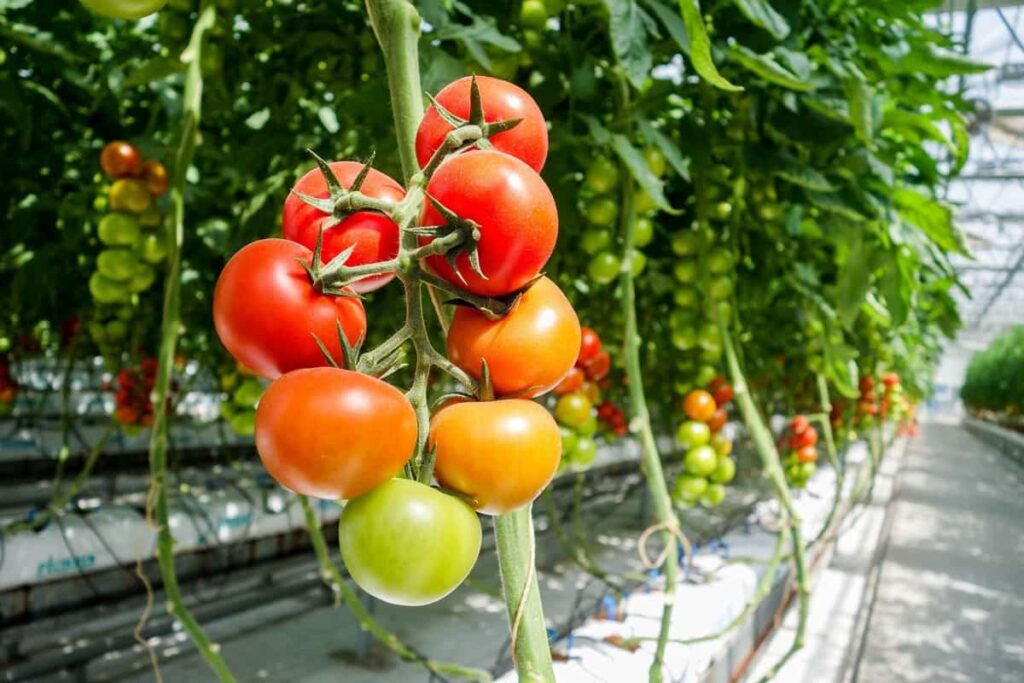
Production processes in a greenhouse in the Philippines
- The greenhouse production process in the Philippines starts with the planting of the desired crops. The greenhouse is then prepared according to the requirements of the crops to be grown. This includes removing any weeds and preparing the soil by adding organic matter. Additional equipment used in greenhouses includes heating, ventilation, and lighting (HVIL).
- Most greenhouses in the Philippines are produced using natural light, although some use artificial light. Greenhouse growers in the Philippines have developed various methods for using natural light, including sun tubes and windows made from translucent materials such as plastic.
- The greenhouse temperature is maintained between 18-24°C, depending on the cultivated crop. Growers use fans or air conditioning to regulate the temperature. Temperature fluctuations during the day are minimized by scheduling work hours during the morning or early afternoon when temperatures are lower and nighttime when temperatures are higher.
- Growers commonly water their plants via rainfall or irrigation delivered through overhead pipes or rain gages fitted at strategic locations within greenhouses. Fertilizers are also used to supplement inadequate nutrients in the soil resulting from deforestation and pollution.
Cost to build a greenhouse in the Philippines
- The Philippines is one of the world’s most densely populated countries and suffers from various environmental problems, including deforestation, soil erosion, and shortage of land. To address these issues, some farmers have begun growing vegetables in greenhouses. Greenhouse farming in the Philippines has several advantages over traditional farming methods. These include increased crop production, reduced need for pesticides and fertilizers, and improved produce quality. Additionally, greenhouse farming is cost-effective compared to other forms of agriculture because it requires little investment in equipment or infrastructure.
- Approximately P40,000 to P600,000 needs to build a commercial greenhouse in Philippines. However, the cost of constructing a greenhouse in the Philippines varies depending on its size and features. In addition, the costs associated with maintaining a greenhouse vary depending on the type of greenhouse and the region in which it is located.
Greenhouse vegetable production in the Philippines
The Philippines is a country blessed with an abundance of fertile soil and plenty of sunlight. Therefore, there are many potential sites to cultivate greenhouse vegetables in the Philippines. The most suitable areas for greenhouse vegetable production are in the northern and central regions of the country, where temperatures remain relatively stable throughout the year. A typical greenhouse structure used for vegetable production can be made from plastic or metal sheets stretched over a frame.
The greenhouse’s walls should be at least 1.5 meters high to allow good ventilation and prevent pests and diseases from entering the structure. The roof should be covered with plastic so light can penetrate the plants and heat can escape. To produce vegetables in a greenhouse, seeds must be planted early in the spring and transplanted into the greenhouse as they grow.
In case you missed it: Top 22 Succulents to Grow at Home: in Pots, Indoors, Greenhouse, Problems, and Care
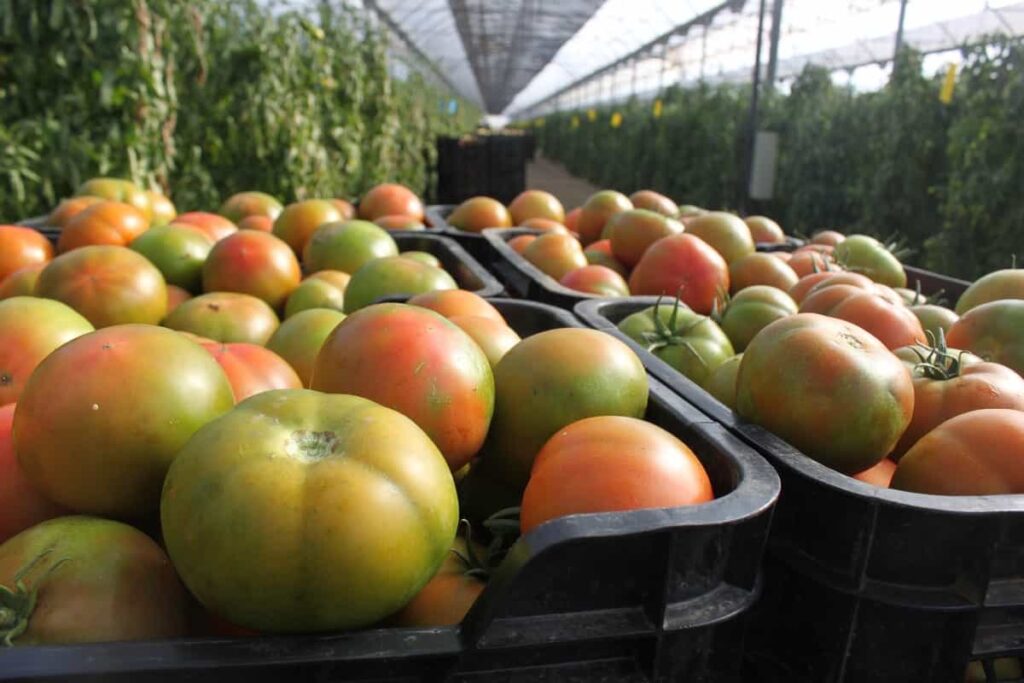
Vegetables grown in greenhouses typically require less water than outdoors since they do not need to contend with rain or irrigation systems. There is also less need for fertilizers since nutrient uptake is accelerated by exposure to intense sunlight. However, there are some limitations to growing vegetables in a greenhouse. Because these plants do not experience fluctuating temperatures like those found outside, they may not fare as well when exposed to cold weather later in their growth cycle.
Conclusion
Greenhouse farming is a growing industry in the Philippines. It is low-cost and offers many benefits, including food security and environmental sustainability. The Philippines is one of the most fertile lands in the world, and its climate is perfect for growing crops. In addition, the country has a rich history and culture, and many natural resources can be used to create a successful greenhouse farming business.
- Types of Pesticides Used in Agriculture: A Beginner’s Guide
- Economical Aquaculture: A Guide to Low-Budget Fish Farming
- 15 Common Planting Errors That Can Doom Your Fruit Trees
- How to Make Houseplants Bushy: Effective Tips and Ideas
- Innovative Strategies for Boosting Coconut Pollination and Yield
- Pollination Strategies for Maximum Pumpkin Yield
- The Complete Guide to Chicken Fattening: Strategies for Maximum Growth
- Natural Solutions for Tulip Problems: 100% Effective Remedies for Leaf and Bulb-Related Issues
- Revolutionizing Citrus Preservation: Towards a Healthier, Greener Future
- Natural Solutions for Peony Leaf and Flower Problems: 100% Effective Remedies
- Maximizing Profits with Avocado Contract Farming in India: A Comprehensive Guide
- Natural Solutions for Hydrangea Problems: 100% Effective Remedies for Leaf and Flowers
- The Ultimate Guide to Choosing the Perfect Foliage Friend: Bringing Life Indoors
- From Sunlight to Sustainability: 15 Ways to Use Solar Technology in Agriculture
- The Ultimate Guide to Dong Tao Chicken: Exploring from History to Raising
- The Eco-Friendly Makeover: How to Convert Your Unused Swimming Pool into a Fish Pond
- Mastering the Art of Delaware Chicken Farming: Essentials for Healthy Backyard Flocks
- 20 Best Homemade Fertilizers for Money Plant: DIY Recipes and Application Methods
- How to Craft a Comprehensive Free-Range Chicken Farming Business Plan
- Brighten Your Flock: Raising Easter Egger Chickens for Beauty and Bounty
- How to Optimize Your Poultry Egg Farm Business Plan with These Strategies
- Subsidy for Spirulina Cultivation: How Indian Government Schemes Encouraging Spirulina Farmers
- Ultimate Guide to Raising Dominique Chickens: Breeding, Feeding, Egg-Production, and Care
- Mastering the Art of Raising Jersey Giant Chickens: Care, Feeding, and More
- Ultimate Guide to Raising Legbar Chickens: Breeding, Farming Practices, Diet, Egg-Production
- How to Raise Welsummer Chickens: A Comprehensive Guide for Beginners
- How to Protect Indoor Plants in Winter: A Comprehensive Guide
- Ultimate Guide to Grow Bag Gardening: Tips, Tricks, and Planting Ideas for Urban Gardeners
- Guide to Lotus Cultivation: How to Propagate, Plant, Grow, Care, Cost, and Profit
- Agriculture Drone Subsidy Scheme: Government Kisan Subsidy, License, and How to Apply Online
- Ultimate Guide to Raising Araucana Chickens: Breed Profile, Farming Economics, Diet, and Care
- Bringing Hydroponics to Classroom: Importance, Benefits of Learning for School Students
- Ultimate Guide to Raising Polish Chickens: Breed Profile, Farming Economics, Diet, and Care
- Ultimate Guide to Raising Australorp Chickens: Profile, Farming Economics, Egg Production, Diet, and Care
- Silkie Chicken Farming: Raising Practices, Varieties, Egg Production, Diet, and Care
- Sussex Chicken Farming: Raising Practices, Varieties, Egg Production, Diet and Care